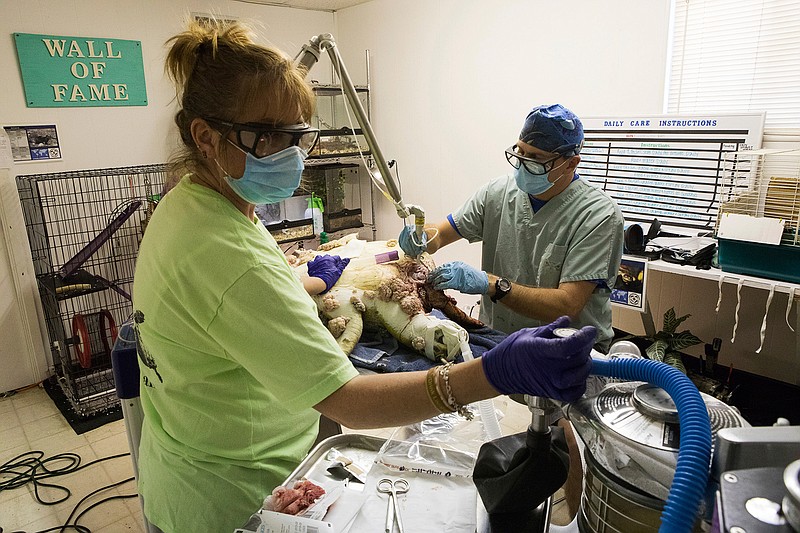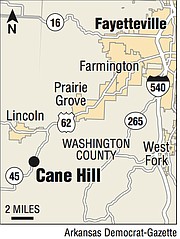CORPUS CHRISTI, Texas-After months of mild weather, temperatures dropped fast and hard on the weekend of Jan. 7, cold-stunning hundreds of sea turtles in Texas waters. But as scientists treated the animals, they discovered another problem.
The Corpus Christi Caller-Times reports at least 94 cold-stunned sea turtles were found at the Upper Laguna Madre and Corpus Christi, according to Donna J. Shaver, chief division of Sea Turtle Science and Recovery at the Padre Island National Seashore.
Scientists found that half of the turtles were afflicted with fibropapillomatosis, or FP, a herpes virus specific to sea turtles. FP was not seen by researchers in Texas until 2009 when nine were studied at South Padre Island.
"We are shocked at the increase in numbers and size and aggression of the tumors, especially on their eyes and shells," said Dr. Tim Tristan, a veterinarian and director of the Texas Sealife Center. "There is something changing in the environment to make it more prevalent."
Only two months in, and 2017 is shaping up to be the busiest year on record for Coastal Bend sea turtle advocates and veterinarians who perform surgeries on FP-afflicted turtles. At $200 per turtle, these nonprofit and unfunded facilities rely on donations or their own pocketbooks to pay for tumor-removal surgeries and rehabilitation.
"We have to keep them isolated," Tony Amos, director of the Animal Rehabilitation Keep. "We are probably the only people, us and the Texas Sealife Center, who handle (sea turtles with FP) on the Gulf Coast. We do it willingly and knowingly. We're not heroes."
The ARK rehabilitates marine turtles and coastal birds from the area of Mustang Island to St. Joseph Island, but they also receive animals from all along Texas shores. Two large concrete tanks are used for the 39 turtles awaiting FP removal surgery. These tanks have their own circulation system to prevent spreading the disease to unaffected turtles, Amos said.
It's believed that FP is spread by marine leeches (family Ozobranchidae) which feed on sea turtles. The disease causes tumors on the soft tissue, head and eyes of the turtles, and are also prevalent on the underside of their shells.
Tristan, the sealife center director, said the disease is more prevalent in green sea turtles but can affect any species, including Kemp's ridley, which are common at the national seashore. Theories about the cause range from climate change, pollutants and contaminants in the ocean and immuno-suppressed sea turtles.
Plans to perform surgery on the 45 sea turtles with FP began immediately after January's cold-stun event, Tristan said.
"Many of the turtles were underweight, so they had to be healthy enough to have surgery," he said. "We can perform surgery on 1-3 turtles a day depending on how many masses each turtle has."
Last year, a $50,000 laser was donated by the Border Animal Hospital in Weslaco to the center to perform tumor removal surgeries, he said. The laser reduced rehabilitation time from months to weeks, Tristan said.
In the first surgery of the year, he removed a 14-pound tumor from one turtle that appeared to be about 10 years old.
"We don't know what has happened in the last five years to make the disease increase so much," Tristan said. "They used to only come in during cold stun events; now we see them all the time. It's very common for them to have large and multiple tumors all over their body."
Though uncommon in Texas until recent years, FP has affected sea turtles in Florida, Hawaii and parts of South America for at least 20 years.
Researchers at the University of Florida have been studying FP and its possible causes for decades, said Catherine Eastman, sea turtle program coordinator for the Whitney Laboratory for Marine Bioscience.
"Some theories point toward pollution as something that is driving persistence of the tumors," Eastman said. "We see large cauliflower tumors hanging off their eyelids, the seam of their shells, soft tissue and the top part of the shell."
A hospital opened about a year ago at the Whitney lab to perform surgeries, rehabilitate and then return them to the wild, she said. Currently, there are six turtles with FP at the lab.
"While they're with us, we have researchers studying the tumors to try to understand the genes that are driving tumor production," Eastman said. "We're not experimenting on the turtles, but the waste product of the surgeries: tumors. We are hoping to start looking into blood and other research aspects."
Like the sealife center, the lab based in St. Augustine, Florida, relies on donations and grant funding for operations. Being associated with the university can be helpful for research resources, but the program is funded mostly with private dollars, she said.
Whether the tumors return is the question. Both Tristan and Eastman said it's hard to know if the tumors aggressively return after surgery because the turtle is returned to the ocean. There have been rare recurrences of tumor regrowth, Eastman said.
"Once the animal is healed and there's no tumor regrowth, we'll release them," Eastman said. "It takes time for those large tumors to grow as large. Any time we see some increase or a curious skin growth, our veterinarian removed it. It also means the animal's tumors and tissues are especially interesting to the researcher."
With the number of FP-afflicted sea turtles rising, the Texas Sealife Center is in need of donations to help pay for the surgeries, food, antibiotics and housing for the animals.
Tristan said the latest cold-stun event will cost about $30,000 in total.



